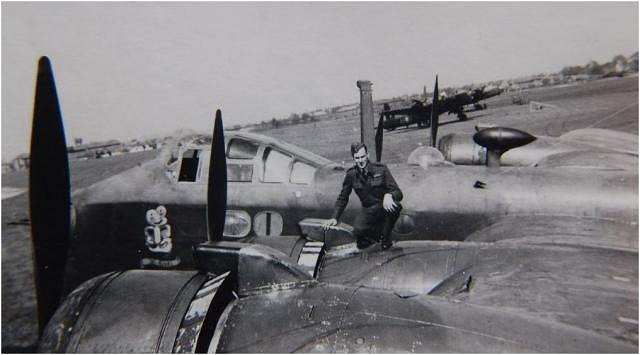Tiki Central / General Tiki / Tiki Nose Art
Post #740847 by Club Nouméa on Mon, Apr 6, 2015 9:05 PM
|
CN
Club Nouméa
Posted
posted
on
Mon, Apr 6, 2015 9:05 PM
More on the Stirling bomber named "Te Kooti", from "Night After Night: New Zealanders in Bomber Command" by Max Lambert: "Te Kooti flew for the last time on 26 May 1943. The 15 Squadron Stirling crash-landed in a Dutch field at 2.15 a.m., the quiet of the night shattered by the roar of engines then the awful rending of metal as the bomber hit the ground, bounced and broke into a thousand pieces. The aircraft, flown by Australian John Wilson, came down about five miles from the Dutch town and German airfield of Venlo, in southeast Holland, after being savaged by flak three-quarters of an hour earlier near Dusseldorf. [....] No New Zealanders were on the Stirling that night but she had been a 'Kiwi' plane until three weeks earlier. She was almost new when skipper Irvine Renner's crew, four of them New Zealanders and all fresh to the squadron at Mildenhall, Suffolk, dubbed the plane Te Kooti in January 1943 and painted a large tiki on the fuselage under the cockpit. [...] Officially she was BK611-U (Uncle), but whenever the bomber hauled its way back into the airfield circuit after long flights to Germany, the crew always called up control announcing the arrival of Te Kooti, not U (Uncle), and the WAAFs on the RT knew instantly who was up above." Irvine Renner chose the name because he was from the Poverty Bay district, which is where Te Kooti was born. His crew and bomber became well-known for flying a special mission to Berlin on 27 March 1943, when they were one of 3 crews that each dropped a 500-pound bomb covered with savings stamps bought by Londoners in Trafalgar Square as part of "Wings for Victory Week". Feelings were still running high after what the Luftwaffe had done to London during the Blitz in the Battle of Britain. |

